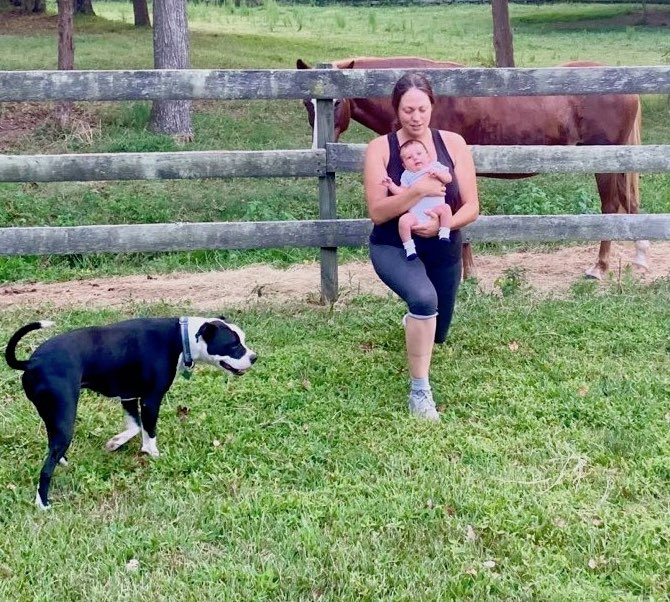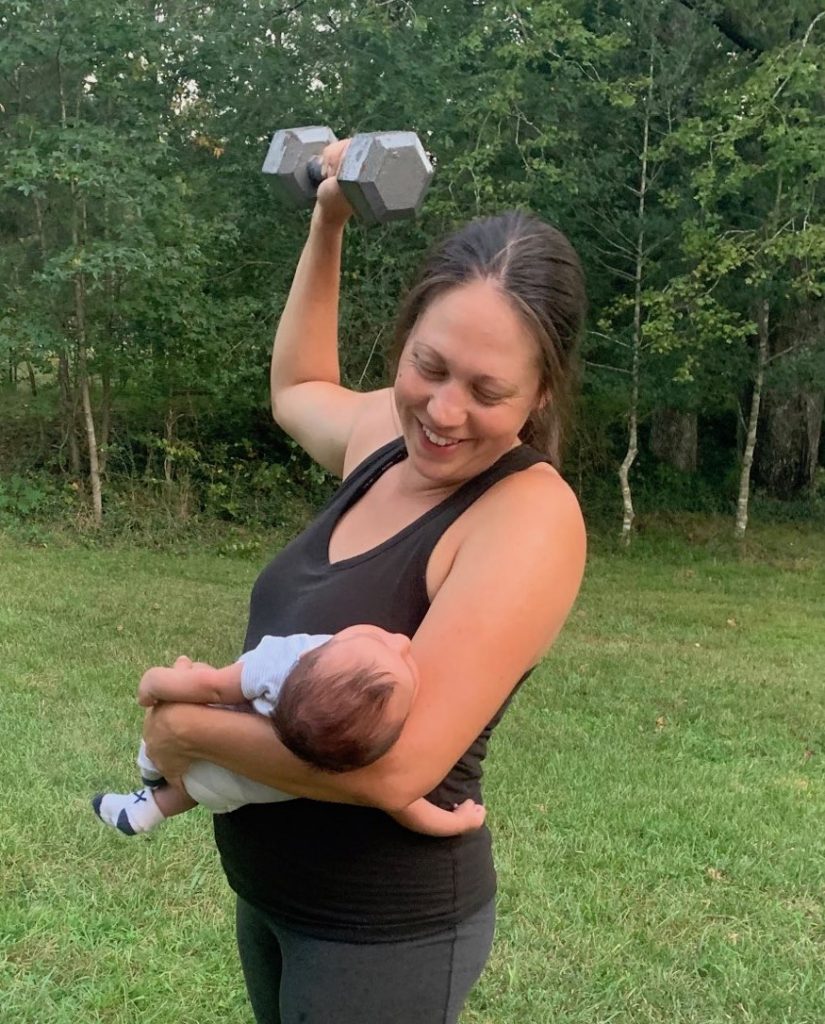
One of Amy’s first rides after the birth of her daughter.
Editor’s Note: Amy Skinner is a regular guest columnist and has been a horse gal since age six. She will present with fellow trainer and rider, Katrin Silva, at the Best Horse Practices Summit.
Skinner rides and teaches dressage and Western. Skinner has studied at the Royal Andalusian School of Equestrian Art in Spain, with Buck Brannaman, Leslie Desmond, Brent Graef, and many others. Visit Amy’s website here.
Skinner writes:
I’ve been horseback since I was a little girl and have always ridden without apprehension. As a six-year old, I jumped three-foot jumps on fire-breathing thoroughbreds. I rode hot horses and rehabbed “problem” lesson horses as a teen. Fear hasn’t really been part of the bag of emotions I carry on the saddle with me. Even while pregnant, though I rode more carefully, I rode without worry.
But after I gave birth, I found that climbing back in the saddle felt completely different. I expected it to be like dusting off the old bike and taking it for a spin; once you got going, it would all come back. Instead, my core was wobbly and unstable after being obliterated by nine months of carrying and then delivering an eight-and-a-half pound baby. When my mare jigged a little and snorted at a car behind the trees, my instability made me nervous. I wasn’t able to help her when she needed me, because I was busy worrying about myself.
Without core muscles to stabilize me, to absorb and compensate for unexpected movement, I felt nervous for the first time in my life. The urge to grab reins ran through my mind. Instead, I hopped off and did some lunge work to relax both her and myself. I realized I would need to take better stock of my current physical situation before riding more.

Working out post-delivery, with baby
The thought suddenly occurred to me: physical as well as mental instability is really the mother of fear. Add to that a certain lack of knowledge – knowledge of the horses’ movement and behavior – and you have the perfect storm.
A horse, being a flighty prey animal, needs to move. If the rider can’t stay with these potentially unpredicted movements, the horse’s confidence drops. Or worse: if the rider grabs the reins, the horse now feels trapped and can easily panic.
Anyone who rides frequently knows that riding is far more than “active sitting.” Confidence in the saddle comes from being able to follow the horses’ movements at the walk, trot, and canter, and being stable enough to go with unexpected movement without stiffness or resistance. Good riding requires mental flexibility and the serious self-control to not grab, pull, or act impulsively in a way that would discomfort the horse. Good riding requires a solid understanding of equine behavior, too. To know why and when they feel the way they do, and to help direct their behavior in productive and safe ways.
My conclusion after having a baby:
 Riders who are unstable and green to horse psychology have every right to be afraid. In fact, without being in shape and knowing the ins and outs of horses’ minds, riding is downright stupid. The remedy? Hop out of the saddle and spend some time on the mat. Work to develop strength, flexibility, and symmetry. Learn about directing your horses. Develop humane training tools focused on guiding, instead of fear-based control methods. Your safety and confidence depend on it. Without them, a good partnership with your horse will remain out of reach.
Riders who are unstable and green to horse psychology have every right to be afraid. In fact, without being in shape and knowing the ins and outs of horses’ minds, riding is downright stupid. The remedy? Hop out of the saddle and spend some time on the mat. Work to develop strength, flexibility, and symmetry. Learn about directing your horses. Develop humane training tools focused on guiding, instead of fear-based control methods. Your safety and confidence depend on it. Without them, a good partnership with your horse will remain out of reach.
As for me? I’ll be working on getting both me and my horses back in shape, and taking stock in where we are without making assumptions again.
Check out other articles on Fitness & Riding.